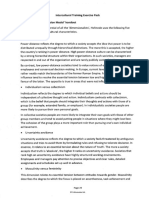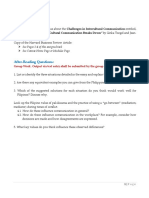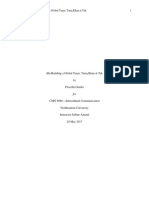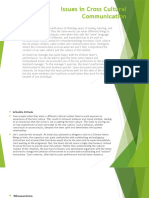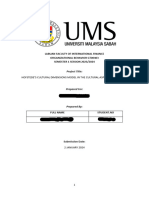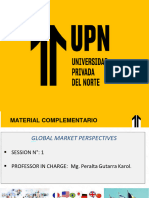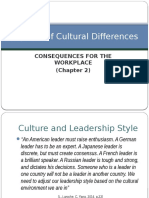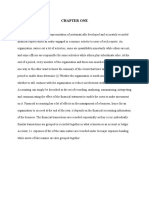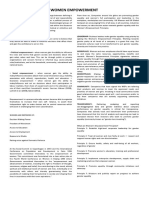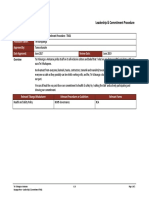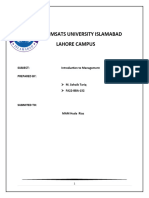0% found this document useful (0 votes)
7 views8 pagesAssignment 2
Zeynep, a German manager at the Swedish company Sveap in Shanghai, struggles to engage local employees in creative workshops due to cultural differences, particularly in communication styles and power dynamics. While Zeynep's background promotes open dialogue and individual contributions, Chinese employees, influenced by high power distance and collectivist values, prefer clear instructions and prioritize group harmony. To improve engagement, Zeynep must adapt her leadership style, build trust through personal relationships, and restructure workshops to align with the cultural context of her team.
Uploaded by
timhennig7Copyright
© © All Rights Reserved
We take content rights seriously. If you suspect this is your content, claim it here.
Available Formats
Download as DOCX, PDF, TXT or read online on Scribd
0% found this document useful (0 votes)
7 views8 pagesAssignment 2
Zeynep, a German manager at the Swedish company Sveap in Shanghai, struggles to engage local employees in creative workshops due to cultural differences, particularly in communication styles and power dynamics. While Zeynep's background promotes open dialogue and individual contributions, Chinese employees, influenced by high power distance and collectivist values, prefer clear instructions and prioritize group harmony. To improve engagement, Zeynep must adapt her leadership style, build trust through personal relationships, and restructure workshops to align with the cultural context of her team.
Uploaded by
timhennig7Copyright
© © All Rights Reserved
We take content rights seriously. If you suspect this is your content, claim it here.
Available Formats
Download as DOCX, PDF, TXT or read online on Scribd
/ 8






